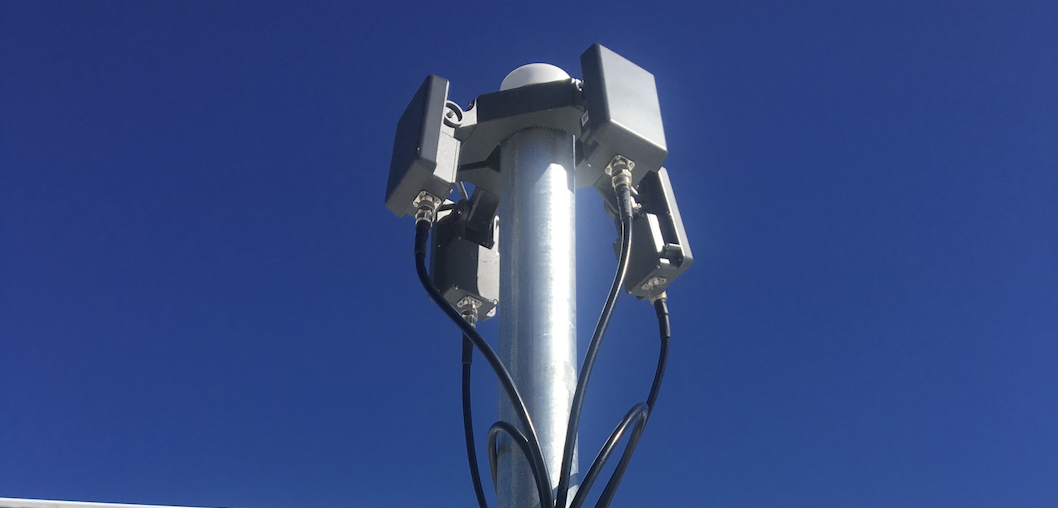State-of-the-art security solutions come with a significant price tag, and a robust drone detection system is no exception. For many organizations, this critical investment can stall in budget meetings, leaving a recognized security gap unfilled. But what if a substantial portion of that cost didn't have to come from your capital budget?
Fortunately, federal programs have allocated millions of dollars to help public and private sector partners acquire the exact technology needed to defend their airspace. This guide is designed to highlight these key funding opportunities and provide a clear roadmap for turning a critical security need into a funded project.
Featured Opportunity: The FY 2025 Port Security Grant Program (PSGP)
For organizations in the maritime sector, the Port Security Grant Program (PSGP) is a primary source of funding administered by the Federal Emergency Management Agency (FEMA). The program provides funds to state, local, and private-sector partners to protect critical port infrastructure from terrorism, enhance maritime domain awareness, and improve port-wide risk management.
The FY 2025 PSGP is currently open, with a strict application deadline of August 15, 2025.
How Drone Detection Fits into the PSGP
The core mission of the PSGP is to fund projects that address identified security vulnerabilities. Drone detection technology aligns perfectly with several of the program's key priorities:
- Enhancing Protection Against Terrorism: Unmanned Aircraft Systems (UAS) are explicitly recognized as a potential threat vector for terrorist attacks against the nation's ports. A C-UAS system is a direct measure to mitigate this threat.
- Improving Maritime Domain Awareness: Airspace security is a critical component of overall domain awareness. A drone detection system provides a real-time, three-dimensional view of the airspace, closing a significant security gap.
- Enhancing Cybersecurity: Drone incursions can be used for cyber-attacks, such as signal interception or network spoofing. Funding for C-UAS can be justified under projects designed to protect a port's digital infrastructure as well as its physical assets.
Eligible applicants include, but are not limited to, port authorities, facility operators, and state and local government agencies.
Other Key Funding Sources to Explore
While the PSGP is specific to maritime environments, several other federal programs offer grants that can be used for drone detection:
- Urban Area Security Initiative (UASI): This program provides funding to high-threat, high-density urban areas to help them build and sustain the capabilities necessary to prevent, protect against, mitigate, respond to, and recover from acts of terrorism. Law enforcement and public safety agencies in designated urban areas can often use UASI funds for security technology, including C-UAS.
- State Homeland Security Program (SHSP): This provides funding to all states to support the implementation of risk-driven, capabilities-based state homeland security strategies. If drone incursions are identified as a key risk in your state's security plan, SHSP funds could be allocated for detection systems.
- Transit Security Grant Program (TSGP): Primarily for mass transit and passenger rail, this program funds projects to protect critical surface transportation infrastructure. As drones can pose a significant threat to railyards and transit hubs, C-UAS technology is a justifiable expense.
5 Tips for a Successful Grant Application
Navigating the grant process can be complex, but following these steps can significantly increase your chances of success:
- Start with a Threat and Vulnerability Assessment: Before applying, you must clearly document the specific threat drones pose to your facility. A formal risk assessment is often a prerequisite for security grants and will form the foundation of your proposal.
- Clearly Define the Solution: Your application must detail exactly what you intend to purchase. This means getting a formal quote for a drone detection system that meets your specific needs. Be prepared to explain why the chosen system is the right fit for your environment.
- Emphasize Collaboration: Many grant programs prioritize projects that demonstrate collaboration. Your proposal will be stronger if it shows how your organization will share the information from the C-UAS system with local, state, and federal law enforcement partners.
- Justify the Cost with Data: Use your risk assessment and any data on past incidents to build a strong business case. Explain how the proposed investment will reduce specific risks and what the potential cost of not having this technology could be (e.g., operational shutdowns, physical damage, or harm to personnel).
- Read the NOFO Carefully: Every grant has a Notice of Funding Opportunity (NOFO) that provides detailed instructions on eligibility, program priorities, and application requirements. The FY 2025 PSGP NOFO is your guide for that specific grant. Read it thoroughly and tailor your application to its exact requirements.
Securing your airspace is a critical investment. By leveraging the right grant programs and submitting a well-crafted application, your organization can acquire the tools it needs to protect against the modern threat of unauthorized drones.












